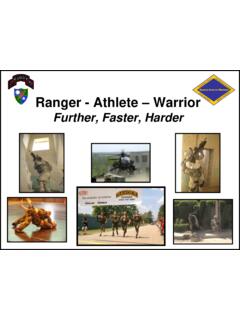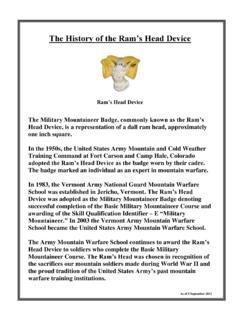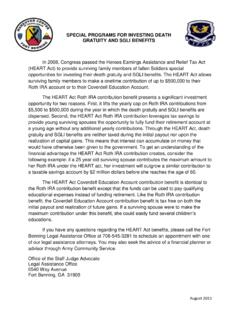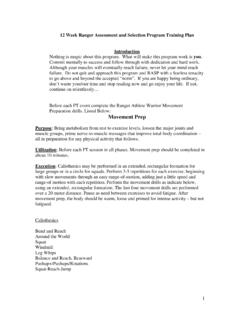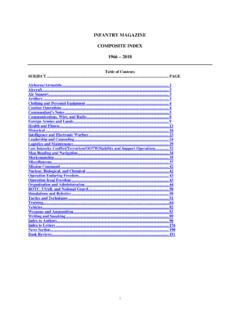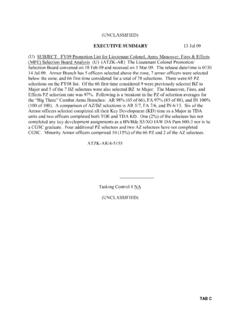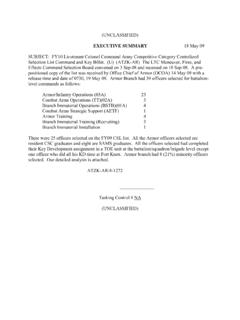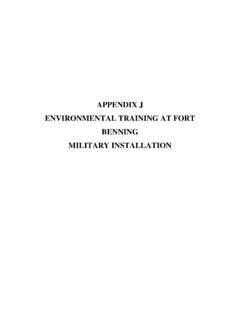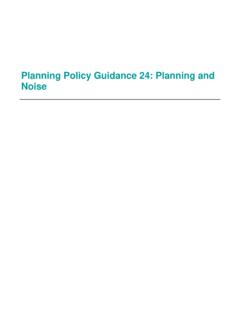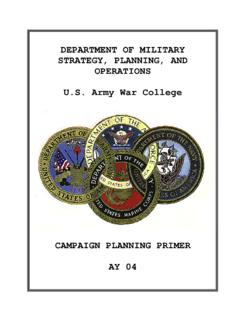Transcription of The Operations Process
1 The Operations ProcessA Guide to the MDMP for Brigade and Battalion StaffsDeveloped in accordance with the following publications:JP 1-02 (Department of Defense Dictionary of Military and Associated Terms), 12 Apr 01 as amended through 17 Oct 08JP 2-0 (Joint Intelligence), 22 Jun 07JP 3-0 (Joint Operations ), 17 Sep 06JP 5-0 (Joint Operation planning ), 26 Dec 06FM 1-02 (Operational Terms and Graphics), 21 Sep 04FM (Intelligence Preparation of the Battlefield), 15 Oct 09FM 3-0 ( Operations ), 27 Feb 08FM (Civil Affairs Operations ), Sep 06 FM 3-07 (Stability Operations ), 06 Oct 08FM (Security Force Assistance), 01 May 09FM 3-24 (Counterinsurgency), 15 Dec 06FM (Tactics in Counterinsurgency), 21 Apr 09FM 3-90 (Tactics), 04 Jul 01FM 5-0 (The Operations Process ), 26 Mar 10FM 5-19 (Composite Risk Management), 21 Aug 06FM 6-0 (Mission Command: Command and Control of Army Forces), 11 Aug 03 Painting by Christopher ThielTable of ContentsDesignReceipt of MissionMission AnalysisCourse of Action DevelopmentCourse of Action AnalysisCourse of Action ComparisonAssessmentsOperations Order and BriefRehearsalsTerminologyMiscellaneous0 3207082954534056626874 Design3 Design is a methodology for applying critical and creative thinking to understand, visualize, and describe complex, ill-structured problems and develop approaches to solve them.
2 The design methodology relies heavily on structuring inquiry about the operational environment and the problem through collaboration and dialog. Design emphasizes developing a holistic understanding of the operational environment and framing the problem. From this understanding, design continues by considering an operational approach for problem resolution and developing a design concept. The design concept consists of the problem statement, initial commander s intent, mission narrative, and commander s planning guidance . The design concept serves as the foundation for more detailed planning , including course of action development and the production of plans and orders using the MDMP. In contrast to the MDMP focus on analysis to develop a course of action, the design focus is to understand the nature of an ill-structured or complex is a tool to help solve "a problem" while design is a tool to help ensure you are solving the "right problem" without creating collateral to remember with regard to design: Conceptual planning and design are enduring concepts of Army planning doctrine.
3 Context distinguishes the nature of problems. Design is commanders leading learning through an honest, forthright exchange of ideas aimed at collective understanding. Design is a best-practice approach to counter the three fatal problem-solving errors and, thus, to improve decision making. Decide a problem is solved when the problem remains. Decide a problem is not solved when it is. Devote effort in solving the wrong conduct design to help them with the conceptual aspects of planning to include understanding, visualizing, and situation to include the complexity of the problem guides the commander s decision on whether to use design. Doctrine has a consistent emphasis on the commander s role to lead planning through understanding the situation, visualizing how to achieve a desired end state, and describing that visualization to planners. Design4 Understand (Frame the Environment):In understanding the operational environment, the commander and staff focus on defining, analyzing, and synthesizing the characteristics of the operational variables (PMESII-PT).
4 They do so in the context of the dynamic interactions and relationships among and between relevant operational variables and actors in the operational environment. Often, learning about the nature of the situation helps them to understand the groupings, relationships, or interactions among relevant actors and operational variables. This learning typically involves analysis of the operational variables while examining the dynamic interaction and relationships among the myriad other factors in the operational environmental frame is a narrative and graphic description that captures the history, culture, current state, and future goals of relevant actors in the operational environment. The environmental frame describes the context of the operational environment how the context developed (historical and cultural perspective), how the context currently exists (current conditions), and how the context could trend in the future (future conditions or desired end state).
5 Visualize (Frame the Problem):Problem framing involves understanding and isolating the root causes of conflict defining the essence of a complex, ill-structured problem. Problem framing begins with refining the evaluation of tendencies and potentials and identifying tensions among the existing conditions and the desired end state. It articulates how the operational variables can be expected to resist or facilitate transformation and how environmental inertia can be leveraged to ensure the desired conditions are problem frame is a refinement of the environmental frame that defines, in text and graphics, the areas for action that will transform existing conditions toward the desired end state. The problem frame extends beyond analyzing interactions and relationships in the operational environment. It identifies areas of tension and competition as well as opportunities and challenges that commanders must address so to transform current conditions to achieve the desired end concise problem statement clearly defines the problem or problem set to (Frame the Concept):The aim of this component is to combine the environmental frame (understand) with the problem frame (visualize) into expressions that drive staff planning and shape expectations for external audiences.
6 The operational approach is a broad conceptualization of the general actions that will produce the conditions that define the desired end state. In very basic terms, commanders communicate an operational approach through a statement of intent that outlines the purpose of the operation and conditions the force must establish to achieve the end state. Commanders also describe acceptable risk and issue planning guidance that establishes specific activities in developing concepts on how to deal with the problem for subordinates and staff mission narrative is the expression of the operational approach for a specified mission. It describes the intended effects for the mission, including the conditions that define the desired end state. The mission narrative represents the articulation, or description, of the commander s visualization for a specified mission and forms the basis for the concept of Operations developed during detailed planning .
7 An explicit reflection of the commander s logic, it is used to inform and educate the various relevant partners whose perceptions, attitudes, beliefs, and behaviors are pertinent to the mission narrative is part of a strategic communications Process and aims to let select audiences know what to the design concept:The design concept is the proper output of design, conveyed in text and graphics, which informs detailed planning . It is articulated to the planning staff through the Products created during design. Problem statement. Initial commander s intent. Commander s initial planning guidance (to include the operational approach). Mission narrative. Reframingis a shift in understanding that leads to a new perspective on the problems or their resolution. Reframing involves significantly refining or discarding the hypotheses or models that form the basis of the design concept.
8 It allows for adjustments throughout the Operations Process , ensuring that tactical actions remain fundamentally linked to achieving the desired conditions. The Military Decision Making Process6 Receipt of Mission7 Alert the staff and other key the tools. Once notified of the new planning requirement, the staff prepares for mission analysis by gathering the tools needed to perform it. These tools include, but are not limited to seek to completely understand Appropriate field manuals, including FM 5-0 and FM 1-02. All documents related to the mission and area of Operations (AO), including the higher headquarters OPLAN and OPORD, maps and terrain products, and operational graphics. Higher headquarters and other organizations intelligence and assessment products. Estimates and products of other military and civilian agencies and organizations. Both their own and the higher headquarters SOPs.
9 Current running estimates. Any design products, including the design concept. Update running initial assessment. During receipt of mission, the commander and staff conduct an initial assessment of time and resources available to plan, prepare, and begin execution of an operation. This initial assessment helps commanders determine The time needed to plan and prepare for the mission. guidance on design and abbreviating the MDMP, if required. Which outside agencies and organizations to contact and incorporate into the planning Process . The staff s experience, cohesiveness, and level of rest or stress. The COS (XO) develops a staff planning timeline that outlines how long the headquarters can spend on each step of the MDMP. The staff planning timeline indicates what products are due, who is responsible for them, and who receives them. Initial commander s guidance . Initial guidance includes: Initial time allocations; a decision to initiate design or go straight into the MDMP; how to abbreviate the MDMP, if required; necessary coordination to perform, including liaison officers to exchange; authorized movements and any reconnaissance and surveillance to initiate; collaborative planning times and locations; initial information requirements (IRs); additional staff tasks.
10 Issue warning order #1. This order includes at a minimum the type of operation, the general location of the operation, the initial timeline, and any movement or reconnaissance to WMission Analysis8 Remainder of FM 5-0 uses Develop initial informationthemes and messages AnalysisStep 1. Analyze the higher headquarters plan or orderStep 2. Perform initial intelligence preparation of the battlefieldStep 3. Determine specified, implied, and essential tasksStep 4. Review available assets and identify resource shortfallsStep 5. Determine constraintsStep 6. Identify critical facts and develop assumptionsStep 7. Begin composite risk managementStep 8. Determine initial commander s critical information requirements and essential elements of friendly informationStep 9. Develop initial ISR synchronization planStep 10. Develop initial ISR planStep 11. Update plan for the use of available time Step 12.
